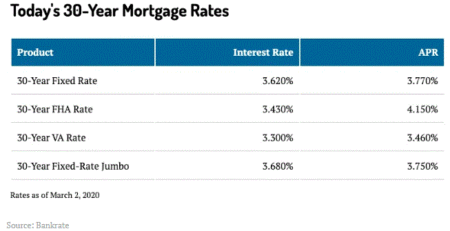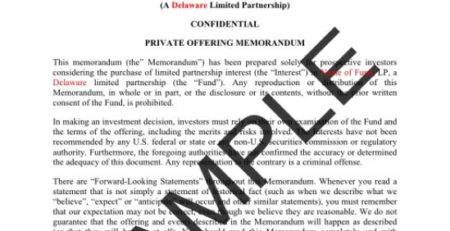Interpreting the Private Placement Memorandum (PPM)
Alina Trigub2020-12-26T21:38:19+00:00Interpreting The Private Placement Memorandum
One of the important syndicator’s jobs is a role of an investors’ liaison. This entails, among a multitude of responsibilities, managing clients’ relationship. Real estate deals are offered by syndicators (check out my article, “The Pros and Cons of Investing in Syndications”), that are typically looking to raise investment capital to purchase a real estate property via syndication. This type of investment is also known as private placement, where the funds are raised from individuals, including their retirement funds (check out my article on SDIRA, ”Investing with IRA Funds”). One of the critical components of the investor’s responsibilities is to carefully study Private Placement Memorandums (PPM), which is also referred to as an offering memorandum, and it offers an in-depth look at the company and its operations and the offering itself.
At its most basic level, a PPM is a legal document prepared by a securities attorney and provided by a real estate syndicator to prospective investors when offering ownership percentage in an investment.
In many ways, a PPM serves the same legal function for real estate syndications as a prospectus issued by publicly traded companies. Do not confuse a PPM with a marketing document or a business plan; a PPM is a detailed legal document. It is designed to offer full disclosure on every topic a potential investor needs to know before investing capital into a deal. These topics include the details the offering and the description of the property, the terms of the offering, commissions, fees, and the risks associated with an investment, as well as disclosures. Every investor, including passive investors, should understand how to read a PPM, so allow me to unpack its main components.
Here is a breakdown of the typical contents and common terminology found in a PPM:
A. Introduction
The Introduction is just that; it’s a description of the company and its core business, as well as information about the property.
B. Offering Terms
This section summarizes the terms of the real estate investment offer, which includes information about the termination date of the offering period, the minimum required investment, the capitalization of the company (both before and after the offering) along with estimated project costs, as well as the provisions to protect the investors, including liquidation and conversion rights, and voting rights.
C. Risk Factors
This section typically lists any general risks faced by similar investments, as well as risks unique to the syndicator and its securities risks that may impact the particular investment. For example, risks may include the dependence on a strategic partnership, competition or market problems, tenant issues, and legal or tax issues.
D. Description of the Company and the Management
This section details the services, performance history, competition, and any other material information that would be relevant to the investor. Management information includes biographies, special skills, and other pertinent information.
E. Use of Proceeds
In this section, the syndicator must describe how the invested capital will be used, as well as gross sales revenues, so that each investor knows how their money would be allocated.
F. Description of Securities
This section describes the rights and restrictions of securities being offered. It should also describe accounting rules, rights of the group members, the ability of the company to change its capitalization such as different classes of shares and distribution of dividends, and termination plan.
G. Subscription Procedures
This section describes the offering investing instructions. Here’s where you agree to the terms of the PPM, because you’re expected to sign the agreement regarding how many shares you’re willing to purchase with the offering. All of the investors will be required to submit funds at this point in order to seal the offer.
H. Exhibits
Exhibits allow a company to provide supplemental information and documents that may be material to an investor’s investment decision. The exhibits may include copies of investment contracts, Pro-forma and any projected returns, financial statements, the organizational documents of the issuer, and licenses.
Read the PPM Very Carefully.
When it comes to PPMs, you will quickly find that there isn’t “a one size fits all” approach, so pay attention when you review each PPM.
So now that you know the lingo and the information in each PPM section, let’s go over a few things to which we need to pay attention. After all, you are about to invest a sizeable chunk of your money, and as the very true cliché says, “buyer beware”. So, what questions should the investors, who are known as the Limited Partners, ask a sponsor or General Partner before handing over the check? Here are a few questions to consider.
1) What are the fees in the deal?
A sponsor earns a spectrum of fees, depending on the type of the investment, as well as the deal, so be watchful that that the PPM clearly presents these fees, and that they don’t vary from the PPM.
- Firstly, for example, a sponsor will earn an acquisition fee of X% of the transaction’s value, which pays back the sponsor for their time and resources they had laid out while researching the property, as well as for overhead and operating costs associated with putting together a deal. For security reasons I’d rather exclude any numerical data from the article and also this data may vary from sponsor to sponsor and from deal to deal. Simply speaking, the transaction fee covers the sponsor’s time and costs related to acquiring the property. Note, while the percentage will vary, so is the formula as at times, for instance, it may be a percentage of amount raised.
- During the operation and maintenance of the investment property, Y% of the net operating income will go towards an asset management fee. Keep in mind this formula may vary from sponsor to sponsor as well. This fee is paid to the sponsor to oversee the property management company and manage the asset. For the most part, multifamily properties need an experienced property management company, so question the sponsor if they insist on managing the property on their own. The types of functions that the property management company performs go well beyond common maintenance, rent collection and reducing tenant turnover. In fact, a professional property management company should have extensive rental market expertise, including local vacancy rates and how to secure tenants.
The asset management fee is paid to the sponsor to safeguard the property from mismanagement. This fee also covers a sponsor’s oversight of renovations cost and time management, as well as regular communications to the investors about the property’s performance.
- When the investment property is sold, a third common type of a fee used to cover the sale process comes into play. This fee is the disposition fee, which is usually Z% of the sale price. This fee covers the sponsor’s effort and costs associated with the sale of the property.
2) Can I sell my shares?
Typically investing via syndication is illiquid. Hence, you need to be aware that there is a minimum hold period. But even beyond this limitation, there are several other possible constraints that will make selling your shares nearly impossible. While some sponsors offer the information about selling shares in the PPM, others do not. If you do not find information about selling shares in the PPM, then ask the sponsor about it before your sign the PPM. It is important to understand that as a passive investor, once you hand over your check, you own the shares of the LLC, but regrettably, you still do not own the property. The bottom line is that after you sign the PPM, you need the sponsor’s permission to sell your shares. Even then you can count on further restrictions when selling your shares because you are placing the sponsor in a kind of a bind. For example, the sponsor has to now consider whether a replacement partner is compatible with the sponsor’s investment methods, as well as whether the partner is in the black, financially speaking.
3) How is Equity Split?
As we discussed above, syndication sponsors earn income from fees, but in addition to fees they also get earnings from an equity split. Experienced sponsors provide a great deal of know-how, and they put in a great amount of work to find a property that would deliver expected returns to passive investors. And sponsor’s work continues from beginning to end, including securing financing, managing the property, and all the way beyond the sale of the property. Therefore, the investment property equity is split is between the sponsor and the passive investors. Equity splits vary from one investment to another. Some may follow a waterfall approach where after certain IRR is reached, the split percentage allocation between investors and sponsors changes.
After the sale of the investment property, net gains are also based on the terms documented in the PPM. Note, that the principal is typical paid back first to investors, then if there was preferred return carryover, this is paid off next, prior to calculating the gains.
4) What is the Sponsor’s Liability and Indemnification?
Lastly, the PPM needs to be crystal clear about the sponsor’s liabilities and indemnification. As an investor, you do not want to find yourself needlessly liable, so make sure that the sponsor is not eligible to be indemnified for all causes.
In conclusion, although the PPM is not filed with the SEC, a PPM must contain accurate, truthful and current information.
A PPM is equally important for the good of the sponsor as well as for the investor because it provides the sponsor protection from legal liability, but it also delivers legal disclosure to investors about offering terms and disclosure, information about the company and sponsor, operations and management, the use of the proceeds, and the risks.
If you take anything away from this article, please remember to carefully examine each PPM and ask the sponsor well-researched questions.











